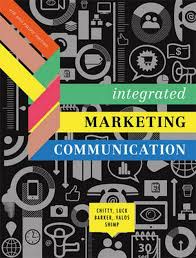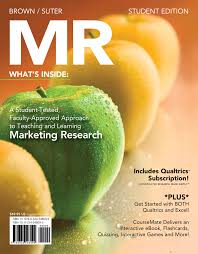Description
Test Bank For Integrated Marketing Communications 4th Edition by Bill Chitty
Chapter 3 – Persuasion in marketing communications
TRUE/FALSE
1.Motivation is low when a message relates to a person’s present goals and needs.
ANS: F PTS: 1 DIF: Moderate TOP: An integrated model of persuasion
2.Feelings and evaluations are aspects of the affective component of an attitude.
ANS: T PTS: 1 DIF: Moderate TOP: The tri-component model of attitudes
3.The cognitive component of an attitude represents one’s behavioural tendency.
ANS: F PTS: 1 DIF: Moderate TOP: The tri-component model of attitudes
4.Motivation, opportunity and attitude determine each person’s elaboration likelihood (EL) for a particular message.
ANS: F PTS: 1 DIF: Moderate TOP: An integrated model of persuasion
5.Peripheral cues may play a more important role than message arguments in determining the outcome of a persuasive effort.
ANS: T PTS: 1 DIF: Moderate TOP: Peripheral cues
6.Counter-arguments occur when a receiver agrees with a message argument.
ANS: F PTS: 1 DIF: Moderate TOP: The receiver’s initial response
7.In Pavlov’s experiment, the bell was the conditioned stimulus.
ANS: T PTS: 1 DIF: Moderate TOP: Classical conditioning of attitudes
8.The personal relevance that a communication has for a receiver is a critical determinant of the extent and form of persuasion.
ANS: T PTS: 1 DIF: Moderate TOP: Receiver involvement
9.Attitudes are temporary.
ANS: F PTS: 1 DIF: Easy TOP: The nature and role of attitudes
10.Pavlov’s experiment utilised classical conditioning.
ANS: T PTS: 1 DIF: Easy TOP: Classical conditioning of attitudes
11.Supportive arguments arise when the receiver challenges a message claim.
ANS: F PTS: 1 DIF: Moderate TOP: The receiver’s initial response
12.To change attitudes, marketing communicators can employ the following three strategies: changing consumers’ brand-related beliefs, altering existing outcome evaluations or introducing a new outcome into how consumers judge brands in a product category.
ANS: T PTS: 1 DIF: Difficult TOP: Attitude-change strategies
13.The theory of reasoned action (TORA) proposes that all forms of planned and reasoned behaviour have two primary determinants: attitudes and advertising.
ANS: F PTS: 1 DIF: Moderate TOP: Message-based persuasion
14.Elaboration involves the matter of whether it is physically possible for a person to process a message.
ANS: F PTS: 1 DIF: Difficult TOP: An integrated model of persuasion
15.When EL is high, the receiver will focus predominantly on peripheral cues rather than message arguments.
ANS: F PTS: 1 DIF: Moderate TOP: An integrated model of persuasion
16.Marketers can enhance consumers’ opportunity to encode information by repeating an ad on multiple occasions.
ANS: T PTS: 1 DIF: Difficult TOP: Enhancing opportunity to encode information
17.Consumers are more likely to adopt an attitude or undertake an action when a likeable person promotes that action.
ANS: T PTS: 1 DIF: Easy TOP: Persuasion in marketing communications
18.In Pavlov’s experiment, the meat powder was the conditioned response.
ANS: F PTS: 1 DIF: Easy TOP: Classical conditioning of attitudes
19.A television commercial’s peripheral cues could be the background music.
ANS: T PTS: 1 DIF: Easy TOP: Peripheral cues
20.According to the elaboration likelihood model (ELM) theory, people experience only temporary attitude changes when persuaded via the peripheral route.
ANS: T PTS: 1 DIF: moderate TOP: Temporary versus enduring attitude change
21.Marketers can enhance consumers’ motivation to process brand information by using celebrities in their advertising.
ANS: F PTS: 1 DIF: Difficult TOP: Enhancing motivation to process messages
22.Outcomes are the consumer’s subjective probability assessments, or expectations, regarding the likelihood that performing a certain act will lead to a certain result.
ANS: F PTS: 1 DIF: Difficult TOP: Message-based persuasion
23.Beliefs involve those aspects of product ownership that the consumer desires to either obtain or avoid.
ANS: F PTS: 1 DIF: Difficult TOP: Message-based persuasion
24.According to the ELM theory, the form of persuasion depends on consumer characteristics and the relative strengths of the brand.
ANS: T PTS: 1 DIF: Difficult TOP: Practical implications: enhancing consumers’ processing of motivation, opportunity and ability
25.Attitudes are hypothetical constructs.
ANS: T PTS: 1 DIF: Easy TOP: The nature and role of attitudes
26.Attitudes are personality traits.
ANS: F PTS: 1 DIF: Easy TOP: The nature and role of attitudes
27.Persuasion is an effort by a marketing communicator to influence the consumer’s attitude and behaviour in a manner that benefits the communicator.
ANS: T PTS: 1 DIF: Moderate TOP: Persuasion in marketing communications
28.The conative component of attitude represents one’s predisposition to think about an object.
ANS: F PTS: 1 DIF: Easy TOP: The tri-component model of attitudes
29.All influence tactics are universally effective.
ANS: F PTS: 1 DIF: Difficult TOP: Reciprocation
30.Involuntary attention requires little or no effort on the part of a receiver.
ANS: T PTS: 1 DIF: Moderate TOP: Enhancing motivation to attend to messages
31.





Be the first to review “Test Bank For Integrated Marketing Communications 4th Edition by Bill Chitty”